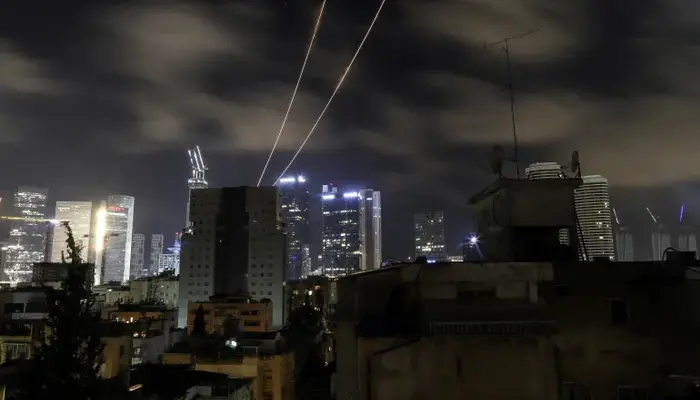Four separate missile impacts have been reported across central Israel, according to emergency services and local authorities. The affected areas include Gush Dan — the greater Tel Aviv region — where three of the missiles landed, and a fourth impact occurred near Soroka Hospital in the southern city of Be’er Sheva.
Heavy damage has been reported at multiple locations. In Holon, a city just south of Tel Aviv, one building has reportedly collapsed entirely. Emergency responders are actively searching through the rubble for survivors or individuals who may be trapped beneath the debris.
Israeli security and rescue services are treating the situation as an ongoing emergency. The cause of the missile barrage has not been officially confirmed by Israeli authorities, though Iranian involvement is suspected, especially following increased tensions in the region due to the ongoing war in Gaza.
Soroka Hospital Area Struck, Not Directly Targeted
One missile reportedly landed near Soroka Medical Center, one of Israel’s largest and busiest hospitals, located in Be’er Sheva. The facility has played a key role during the current conflict, treating injured soldiers and civilians from both the south and the Gaza border regions.
Read: Israel Strikes Near Iran’s Khondab Heavy-Water Facility
Officials have clarified that the hospital itself was not directly targeted, but a nearby building sustained a direct hit, causing significant structural damage. Medical staff and emergency crews have cordoned off the area and are urging the public to stay away from the impact site.
Search operations are currently underway, as rescue teams carefully examine the damaged structures to ensure no one remains trapped. The Israeli Home Front Command and fire department units are using specialized equipment to scan the rubble and extract victims if needed.
#شاهد | اشتعال النيران وتصاعد الدخان من إحدى المواقع التي سقط بها صاروخ إيراني قبل قليل في “حولون” قرب “تل أبيب”. pic.twitter.com/iWrY3QgZjl
— المركز الفلسطيني للإعلام (@PalinfoAr) June 19, 2025
Injuries Reported, Public Urged to Stay Indoors
Initial reports from Magen David Adom (MDA), Israel’s national emergency medical service, confirm that at least 25 people have been injured as a result of the missile strikes. One person is in serious condition following the Holon strike, while more than two dozen others have suffered light to moderate injuries across the affected areas.
These numbers are expected to change as emergency crews continue to assess the damage and provide medical care to victims. Local authorities have issued warnings to residents to stay indoors and avoid affected zones to allow rescue teams to operate without obstruction.
Holon, where a building collapsed entirely, has been designated a high-risk zone due to the instability of surrounding structures. Police and military units have sealed off the impacted areas to ensure public safety and to carry out investigations.
Heightened Alert as Situation Develops
The missile strike marks a dramatic escalation in hostilities amid an already volatile regional conflict. While Israeli officials have not yet released a formal statement about who was responsible, suspicions are high that the attack is linked to Iran or its affiliated groups, possibly in retaliation for Israeli military operations in Gaza or Syria.
Air raid sirens were triggered across central and southern Israel moments before the impacts, giving residents only seconds to reach shelters. This incident highlights ongoing vulnerabilities in Israel’s densely populated urban centers, despite its advanced missile defense systems.
Authorities have increased security presence across central Israel, with military units deployed in key areas and additional Iron Dome batteries being repositioned. Residents have been told to remain vigilant and to follow all instructions from civil defense channels.
As of now, recovery operations are still underway. Officials warn that the true scale of damage and casualties may become clearer in the coming hours.
